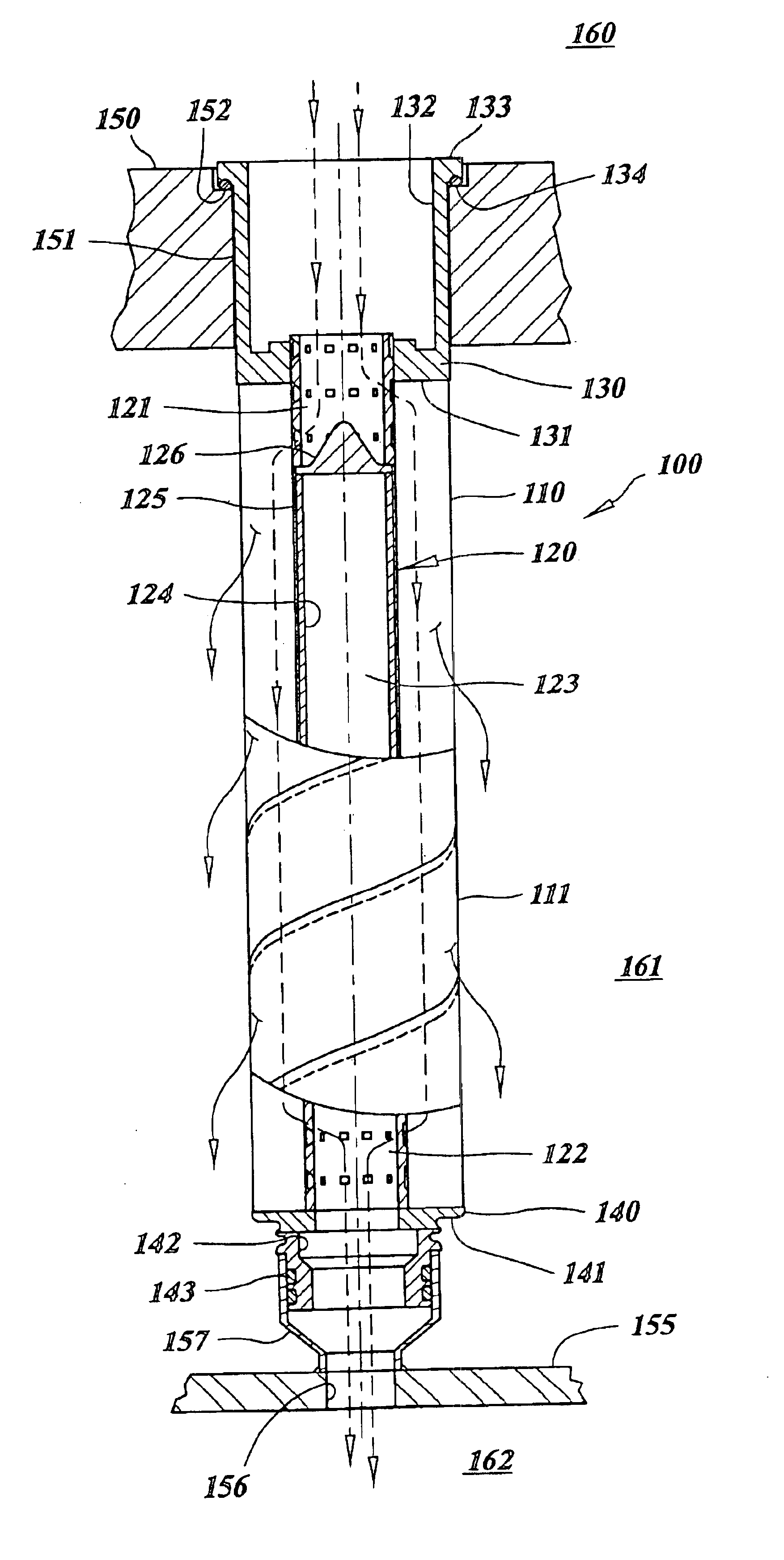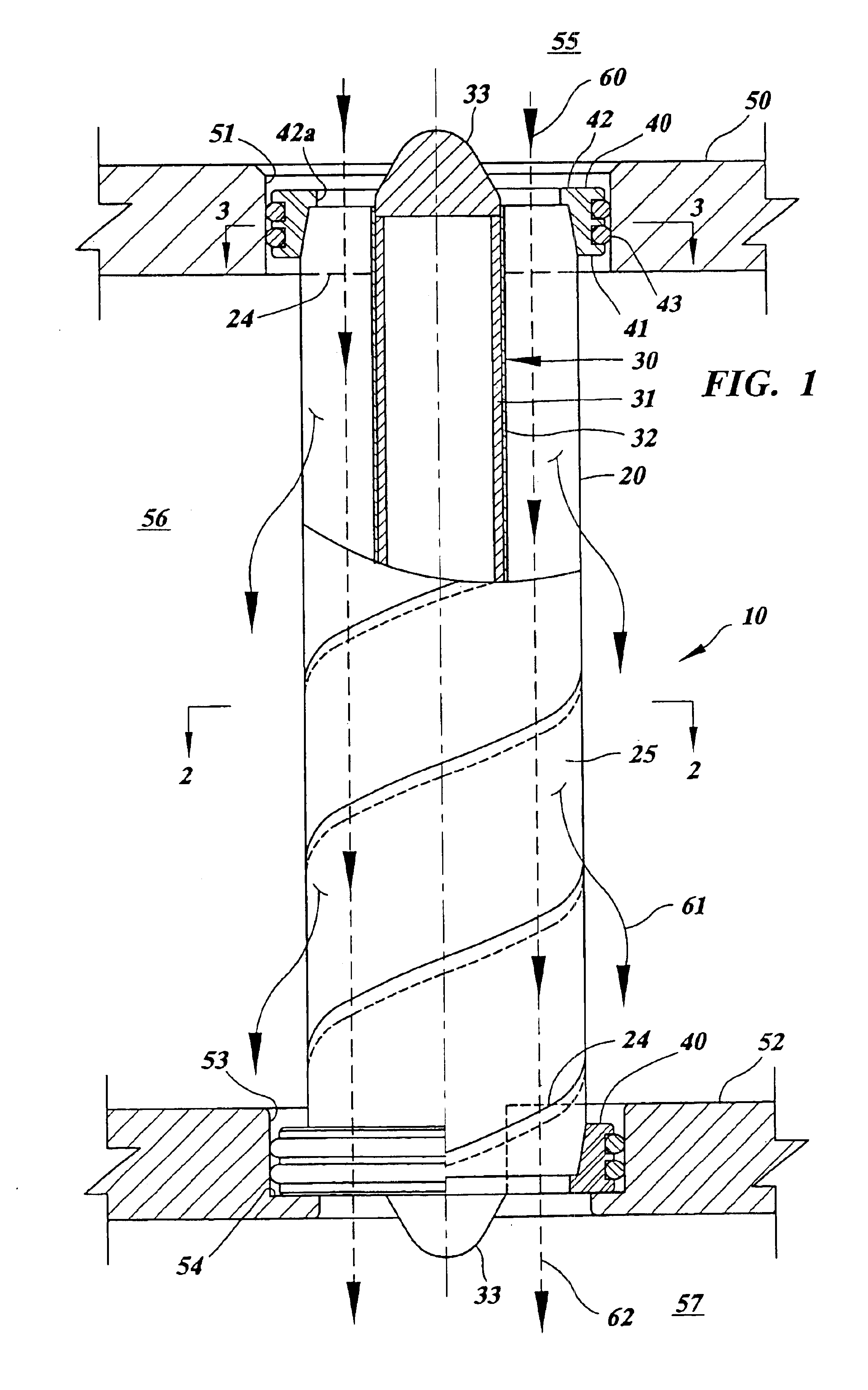Fluid treatment elements
a treatment element and crossflow technology, applied in the direction of liquid degasification, separation processes, dissolving, etc., can solve the problems of unsuitability for situations, unsuitable for situations, and the fluid treatment system employing a crossflow fluid treatment element is usually more complicated, and achieves the effect of increasing the lifespan of the fluid treatment element, reducing the number of problems, and effective space us
- Summary
- Abstract
- Description
- Claims
- Application Information
AI Technical Summary
Benefits of technology
Problems solved by technology
Method used
Image
Examples
example 1
[0413]This Example illustrates an advantage of fluid treatment elements in particular, fluid treatment elements in accordance with an embodiment of the present invention, namely, that the fluid treatment elements provide superior performance when cleaning is carried out in the crossflow mode.
[0414]Two fluid treatment elements were subjected to repeated cycles of filtering followed by cleaning either by conventional backwashing or by crossflow cleaning using water in conjunction with air. Each fluid treatment element measured about 20 inches long and had a fluid treatment medium with a surface area of about 12 square feet per side. The two fluid treatment elements had similar fluid treatment layers, drainage layers, and flow rate per unit area. The fluid treatment element subjected to crossflow cleaning had the structure shown in FIG. 5. The fluid treatment element subjected to backwashing was similar in overall structure, except that it had a core which was perforated over its entir...
example 2
[0417]This Example illustrates a method of mass transfer in accordance with an embodiment of the present invention.
[0418]An all fluoropolymer pleated fluid treatment element substantially depicted in FIG. 23 comprising an expanded PTFE membrane of pore rating 0.2 μm and a PFA mesh was tested for transfer of ozone from a mixture of ozone and oxygen into deionized water. Two different ozone concentrations in oxygen, 150 g / m3 and 250 g / m3, were employed. The tests were carried out in single pass mode. The water flow rate was varied from 4 lpm to 16 lpm. The water pressure was 25 psi. The oxygen pressure was 20 psi. The concentration of ozone in water was monitored. FIG. 24 depicts the dissolved ozone concentration as a function of the water flow rate for the two ozone gas concentrations. As can be seen from the figure, the higher the gas phase ozone concentration, the higher the dissolved concentration. FIG. 24 also depicts the ozone flux as a function of the water flow rate. As can be...
example 3
[0419]This Example illustrates an advantage of the diffusive mass transfer in accordance with an embodiment of the present invention.
[0420]Two all fluoropolymer pleated fluid treatment element substantially depicted in FIG. 23 comprising an expanded porous PTFE membrane of pore rating 0.1 μm available from Pall Corporation as EMFLON™ and a diamond shaped PTFE mesh were tested in sparging and non-sparging modes. It was found that the testing in the non-sparging mode produced higher ozone transfer to water than in the sparging mode. Two different ozone concentrations were employed in these tests.
[0421]For the test where the O3:O2 concentration was 150 g / m3 and the ozone was sparged, the test conditions were as follows: Water flow rate, 8 lpm; oxygen flow rate, 4 slpm; P(water in), 28 psi; P(water out), 25 psi; P(oxygen in), 26 psi; P(oxygen out), 24-26 psi; recirculation volume, 8 gallons. The water temperatures were as follows: at the beginning of the test, 57.6° F., and at the end o...
PUM
| Property | Measurement | Unit |
|---|---|---|
| size | aaaaa | aaaaa |
| width | aaaaa | aaaaa |
| diameter | aaaaa | aaaaa |
Abstract
Description
Claims
Application Information
 Login to View More
Login to View More - R&D
- Intellectual Property
- Life Sciences
- Materials
- Tech Scout
- Unparalleled Data Quality
- Higher Quality Content
- 60% Fewer Hallucinations
Browse by: Latest US Patents, China's latest patents, Technical Efficacy Thesaurus, Application Domain, Technology Topic, Popular Technical Reports.
© 2025 PatSnap. All rights reserved.Legal|Privacy policy|Modern Slavery Act Transparency Statement|Sitemap|About US| Contact US: help@patsnap.com



